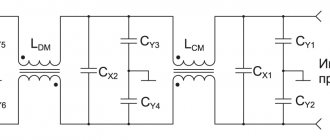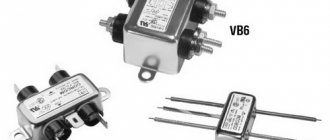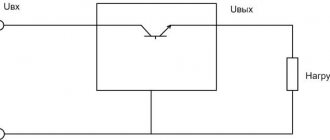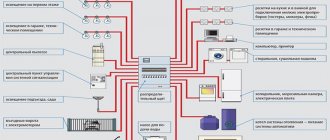Despite the fact that home appliances are quite expensive, it is difficult to imagine a home that does not have basic household electrical appliances. Manufacturers are trying to pay special attention to the reliability of the electronic components of home electrical equipment, because the failure of any device seriously impacts the family budget.
However, the power units, microcircuits, and sensitive semiconductors of these devices operate at their limit during power surges or unplanned power outages. And if such problems in the power supply are quite frequent, then there is a high risk of being left with burnt-out equipment and, at best, with costly repairs.
You can protect your equipment. It is for such unforeseen impacts that stabilizing devices have been developed - surge protectors and voltage stabilizers. It is important to remember that, despite the same purpose, the operating principles of these stabilizing devices are different. And here you need to figure out what is more suitable for protecting this or that electrical appliance. Therefore, before choosing a voltage stabilizer or surge protector, you should understand how they work, what functions they perform and what interference they protect from.
No. 10 – SVEN SF-05PL
Price: 820 rubles
A good filter at an affordable price. The cable length here is decent - three meters, there are five sockets. A distinctive feature of the solution, due to which it looks more interesting than most competitors, is the presence of individual switches. It’s not even worth mentioning how convenient it is. Another advantage is plastic, which does not emit unpleasant odors during operation, since the body does not heat up.
The inexpensive device copes with its task perfectly well; many buyers report in reviews that it has been serving them faithfully for several years now. Considering how much the filter costs, it has no significant disadvantages.
SVEN SF-05PL
Useful life of fixed assets
If you did not find your fixed asset in the classifier of depreciation groups, then establish the SPI of this OS, based on the service life specified in the technical documentation or the manufacturer’s recommendations.
Useful lives of fixed assets: the classifier does not contain your OS
If an organization uses the straight-line method of calculating depreciation, then, having acquired a used fixed asset, it can establish its useful life as the SPI according to the classifier, reduced by the number of years/months of operation of this fixed asset by the ex-owner. You can take the SPI established by the previous owner and reduce it by the number of years/months of operation of the OS by this owner (clause 7 of Article 258 of the Tax Code of the Russian Federation).
automatic and semi-automatic telephone stations; automatic and semi-automatic intercity and international telephone stations - sixth group
(property with a useful life of over 10 years up to 15 years inclusive)
OKOF-2 (as amended on 05/08/2021, taking into account changes came into force on 07/01/2021) All-Russian classifier of fixed assets OK 013-2021 (SNA 2021) came into force on January 1, 2021 to replace OKOF OK 013-94 For To convert the OKOF code to the OKOF2 code, use the OKOF to OKOF2 code converter.
Other communication equipment transmitting with receiving devices, not included in other groups
special tool kits for telecommunications equipment and line-cable works; devices and equipment for operational work in communications - first group
(all short-lived property with a useful life from 1 year to 2 years inclusive)
- In the first column of OKOF, find the type of property to which the OS belongs (9 digits).
- Check the code specified in the OKOF in the first column of the OS classification.
- If there is a code in the OS classification, look at which depreciation group the OS belongs to.
The All-Russian Classifier of Fixed Assets (OKOF), which determines the depreciation group of fixed assets, remains unchanged. From January 1, 2021, OKOF OK 013-2021 (SNS 2021), approved by Rosstandart order No. 2021-st dated December 12, 2021, is in effect. The same classifier will be in effect in 2022.
Method 2 - by property class code
The property subclass code differs from the property type code in that the seventh digit in it is always zero. For example, a rotary pump belongs to subclass 14 2912021 (centrifugal, piston and rotary pumps). If this code is not included in the OS classification, determine the depreciation group using the second method.
Depreciation groups of fixed assets in a year are determined according to new rules. The table will help you determine exactly where to place your property. And the instructions will tell you which classifier to use for depreciation groups. Activate trial access to the RNA magazine or subscribe at a discount. Urgently check whether you have correctly determined the useful life of fixed assets. For many properties, this period has changed retroactively, as the Government made large-scale changes to the Classification.
We recommend reading: Dates for checking Hot and Cold Water Meters 2021
No. 9 – InterStep SP-306W
Price: 770 rubles
Our 2022 surge protector rankings move on. The budget model has 6 sockets, as well as two USB ports. The presence of the latter will allow you to charge smartphones and other gadgets without occupying an outlet. However, its distinguishing feature is the enhanced surge protection unit. The manufacturer claims that thanks to it the filter is 10 times more reliable than competitors at the same price.
Another advantage of the cheapest representative of the selection is considered to be its ergonomic design, which allows you to hide wires from connected devices. Most often in reviews, owners complain about the length of the cable - it is only 1.8 meters.
InterStep SP-306W
#7 – Pilot Pro GP
Price: 1,400 rubles
Surge filter from a domestic brand. His presence is not due only to patriotic feelings. The device can show the owner that he has inserted the plug the wrong way. There is also an inverted phase indication. The main advantage is protection. The device guarantees the safety of equipment in the event of power surges and impulses. In the event of a short circuit, the fuse will burn out, but it can be replaced.
There are six sockets in total, with two for flat plugs. The filter housing is made of impact-resistant plastic, and the tires are made of metal. This ensures tight contact of the plug in the sockets. For ease of placement of the wire, a special removable element is provided. The cable length is a controversial point - 1.8 meters. Otherwise, there are no shortcomings; in terms of price-quality ratio, this is an excellent option.
Pilot Pro GP
What to choose?
The answer to the question depends on: a) the quality of the alternating current in your home; b) a specific consumer. If you firmly know that your voltage always stays around the norm of 220-230 V, then a surge protector is enough to protect any consumer.
Unfortunately, stability in Russian networks is more a rarity than a rule. Use a multimeter and see for yourself. It is unlikely that you will always observe normal voltage, especially somewhere in the countryside.
However, you should not immediately run for a stabilizer: not all equipment today requires a stable value of 220 V. Heating devices with heating elements, as well as short-term use devices with high starting currents (for example, pumps, power tools) definitely do not need it.
Most modern electronics are equipped with switching power supplies that can operate over a wide range: from 90 to 260 V and even more. The circuitry of such power supplies always produces a constant, stable voltage for the internal elements of the circuit. All computers are powered by such power supplies, therefore, contrary to popular belief, a stabilizer is not needed for a computer. Of course, a lot here depends on the cost and class of the computer power supply: cheap models may have a narrower range or simply work poorly even with small deviations.
TVs, monitors, computer system units, LED lamps and luminaires, chargers for laptops, tablets, phones and other household appliances, which include switching power supplies, almost never need voltage stabilizers.
What devices really need this unit? First of all, these are long-term use devices without built-in power supplies, in particular those based on electric motors: refrigerators, pumping stations, air conditioners, etc. When the voltage increases, these devices begin to work with overload, heat up more, and wear out faster.
Some models of gas boilers are especially sensitive to voltage drops. But not all! Therefore, before buying a stabilizer for a gas boiler, look at the instructions for the boiler.
If the documentation indicates a narrow operating range of input voltages (±5...10% of the nominal value), and the voltage in the outlet jumps much more, then, alas, you cannot do without a stabilizer.
You can learn more about whether a gas boiler needs a stabilizer or not from this article. And here they will tell you why your TV doesn’t need a stabilizer at all.
If you still use incandescent lamps and are annoyed by their blinking during power surges, then they can also be connected through a stabilizer. For this particular case, I highly recommend inverter-type stabilizers (for example, InStab from Shtil).
Finally, if any device (even an LCD TV or PC with switching power supplies) periodically turns off when the voltage drops, it still needs a stabilizer.
No. 6 – Most EHV
Price: 1,200 rubles
The Most EHV model is at the equator of the top network filters. It is equipped with five sockets with an individual switch for each. Overheating protection is provided by a thermobiometallic fuse. It is quite reliable and in reviews the owners report that it really copes with its task.
Each of the outlets has a ground connection, so there will be no interference or other problems. The brand confirms its confidence in its creation with a three-year guarantee. The cord is long - 6 meters. This is one of the best indicators in this segment. The model is popular in Russia, which is not surprising - it is really worth attention.
Most EHV
Operating principle of protective devices
Network filter
A surge protector is similar to a regular power strip, but it has a filter board installed inside it. A quality filtration board contains:
- Varistors: with a sharp increase in voltage (pulse surges), they sharply reduce their resistance (from hundreds of megaohms to tens of ohms), essentially short-circuiting the circuit and taking on the entire load. In this case, either the element itself or the fuse connected in series with it may burn out, but the connected devices will remain intact.
- LC filter: a circuit of inductors and capacitors that absorbs high-frequency interference. Reusable thermal fuses: can be used instead of fuses. Made in the form of a button placed on the body. When the permissible current is exceeded or there is a short circuit, such a fuse presses the button and breaks the circuit. To restore the fuse, simply press the button back.
- Gas dischargers: sometimes gas discharge electrodes are installed in parallel with the varistor, which take on high voltages (several kilovolts) to quickly eliminate potential differences.
All surge protectors are equipped with grounding. A self-respecting manufacturer will indicate on which lines varistor protection is installed. If a varistor is installed only between ground and phase, grounding is required for the operation of such a filter. If “phase-zero” protection is specified, grounding is not necessary; the entire pulse will go to zero.
A surge protector is a complex device that includes specific electronic components for effective suppression of pulse and high-frequency interference, protection against overload and short circuit.
A high-quality filter is immediately visible - it is a solid, fairly massive device, stuffed with electronics. The price of a good surge protector starts from 800-1000 rubles.
Based on the circuit design, the network filter can cope with only two types of interference: high-frequency and pulsed. Obviously, such a device is not able to cope with long-term voltage drops and distortion of its shape. Here you will already need a stabilizer.
Stabilizer
If the voltage in your area goes beyond the maximum permissible deviations for a long time, the only way out is a stabilizer. Such devices produce a (nearly) constant output amplitude over a wide range of input values. A review of their circuitry is beyond the scope of this article, but I can advise those interested to take a look here.
In short, voltage equalization is accomplished in four different ways:
switching transformer windings (via relays or triacs);- electromechanical engine on an autotransformer;
- energy accumulation using resonance in ferromagnets;
- using an inverter.
Each of these implementations has its own pros and cons and a specific area of application. Such devices are capable of providing constant voltage to power electrical appliances. Inverter stabilizers are also capable of eliminating distortion of the sinusoid shape and frequency drift. In general, inverter stabilizers are the most multifunctional, accurate and reliable, but their price is also the highest. They are also called double conversion stabilizers.
Absolutely all high-quality stabilizers also have a built-in surge filter, so they save you from impulses and high-frequency interference. Thus, when buying a stabilizer, you also get a surge protector.
Initial simple models of stabilizers can cost the same as good surge protectors. However, reliable devices are significantly (tens of times!) more expensive. The price of a stabilizer mainly depends on its circuit design and rated power.
No. 5 – APC by Schneider Electric PMF83VT-RS
Price: 3,990 rubles
Experts agree that the model is one of the best not only in the brand’s lineup, but also in its segment as a whole. It is equipped with eight sockets, each of which has grounding, as well as protective curtains. The cord is quite long - three meters, the optimal indicator.
The protection here is well thought out - the filter ensures the safety of the data transmission line, filters electromagnetic interference and radio frequency noise, and protects against impulse noise and lightning strikes. There is a rotary wire clamp that rotates 180 degrees. Thus, you will not have problems with the placement of the device.
APC by Schneider Electric PMF83VT-RS
No. 4 – Brennenstuhl Alu-Office-Line 60.000A 4
Price: 5,500 rubles
One step away from the top pedestal, where the best surge protectors are collected, is the Brennenstuhl Alu-Office-Line model. In addition to the stylish design, which looks even more impressive in real life than in the photo, the model has two USB ports for charging gadgets. True, there are only four sockets here, which may scare off many. True, they are of the highest quality and ensure tight contact with the plug.
Many people note in reviews that the model is capable of protecting devices from impacts with a maximum leakage current of up to 60,000A. The cable routing is well thought out and ensures ergonomic placement of the filter. It is noteworthy that the sockets are located at an angle of 45 degrees and are suitable for angled plugs.
Brennenstuhl Alu-Office-Line 60.000A 4
Option 1: new building
Let's first consider the most optimistic scenario: a newly commissioned new building with a brand new substation;
The wiring is made exclusively of copper with perfect installation, high-quality contacts that have not yet oxidized and automatic fuses for the appropriate current. It would seem that the voltage in the outlet should be as close as possible to an ideal sinusoid. Alas, even such an idyll can easily be ruined for a couple of months by a hop-up group with a broken-down tool invited by a neighbor for repairs: each electric motor in each dying angle grinder, drill or chipper will spark with all its might until its final feature, sending “death impulses” along the wiring of the house. .
This is just the beginning: the most active and restless residents will periodically connect industrial welding machines to their home network so that all neighbors in the entrance or house can “enjoy” pulsed noise in the form of stripes on TV and PC screens and a loud crackling sound in speakers and headphones.
So, even residents of relatively new microdistricts in large cities and metropolises with relatively new infrastructure are not protected from pulsed and high-frequency power supply interference - at least of local origin.
At a minimum, the first few years of a new home's life will inevitably be devoted to various repairs and alterations. In such a situation, it is possible that purchasing the most “powerful” surge protector is not necessary, but you cannot do without filtering the power voltage at all. For inexpensive options, you can take a closer look at domestic surge protectors. Its range includes many models that differ in the level of protection and the presence of additional functions.
The most affordable and simple solution for filtering mains voltage can be called the inexpensive mains filter ERA SF-5es-2m-I. The device is made in a fireproof housing, has a 2 m long cable and is equipped with five EURO format sockets with a grounding contact.
The maximum filter load is 2200 W (10 A), the maximum interference current is stated at 7000 A, and the maximum energy dissipation is 300 J with a maximum load voltage deviation of 275 V.
Surge filter ERA SFU-5es-2m-W
This filter is equipped with a power-on indicator, a surge noise filter, short-circuit and overheating protection. In addition, the device attenuates high-frequency interference (0.1 - 10 MHz) by 10-40 dB.
Those for whom high-frequency filtering is not critical can pay attention to the ERA USF-5es-1.5m-USB-W mains filter: with similar load and maximum current characteristics (minus the RF filter), this device is equipped with a switch and provides maximum energy dissipation up to 125 J, and is also equipped with two built-in USB ports for charging portable equipment and has wall mounting.
A slightly more expensive option is the ERA SFU-5es-2m-B surge filter, which combines all the advantages of the two filters mentioned above, including an RF filter, USB ports, wall mounting, a switch and maximum energy dissipation of up to 300 J, but is made in a reliable Polycarbonate body in stylish black color.
For those who need long cables, it makes sense to take a closer look at the Sven Optima series surge protectors for six outlets, supplied retail with a 1.8-meter, 3-meter or 5-meter network cable. These filters are designed for a maximum load of up to 2200 W, a maximum interference current of up to 2500 A and a maximum energy dissipation of up to 150 J with a load voltage deviation of up to 250 V.
Despite the low price, they are equipped with a built-in switch, power indicator, surge noise filter, short circuit protection and automatic overload protection.
The same class of devices includes the Pilot L 1.8 m surge protector from ZIS Company. A special feature of this filter is the presence of five EURO standard sockets plus one additional Russian-style socket, as well as support for a maximum interference current of up to 2500 A and a maximum dissipated energy of up to 800 J.
Standing apart from the line of surge protectors are single-socket solutions, which are present in the range of most manufacturers today. Owners of Hi-Fi and Hi-End equipment, especially those that were released 20 or more years ago, should definitely pay attention to these filters. An “individual” surge filter will protect the listener from clicks and other background sounds, and your favorite amplifiers, turntables, phono stages and soundboards from premature aging of already “not young” components.
Surge filter Pilot S-Max
For example, a single-socket surge protector Pilot BIT S with a maximum load of up to 3500 W, a maximum noise current of up to 10,000 A and dissipated energy of up to 150 J will provide complete protection of equipment using a surge noise filter, short circuit and overload protection.
Another interesting single-socket solution - the APC Surge Arrest P1-RS surge protector from Schneider Electric, despite its compact size, guarantees a maximum load of up to 16 A, a maximum interference current of up to 26,000 A and energy dissipation of up to 903 J. Such powerful protection is a success can be used as an adapter filter for a regular multi-socket extension cord.
APC P1-RS surge protector
No. 3 – Energenie EG-PMS2-LAN
Price: 7,000 rubles
Many professionals recommend this surge protector if you are looking for a device that can provide excellent protection for your computer. This is an advanced model, which is equipped with four sockets with grounding and curtains. It is noteworthy that turning them on and off depends on events occurring on the computer - starting or shutting down Windows, turning on certain programs. Thus, unused devices will not consume electricity.
There is an RJ-45 network interface, which is the main distinguishing feature of the filter from previous competitors in the rating. Due to this, you can program all four sockets individually and control them from your smartphone, wherever you are.
Energenie EG-PMS2-LAN
Drawing conclusions
So, which is better - a surge protector or a voltage stabilizer? Brief summary:
- If the lights in your house do not blink and the measurements show constant values, buy a good surge protector. It will protect consumers from short circuits, voltage overloads, pulse discharges and various types of interference;
- if voltage drops are a frequent occurrence, and its values go beyond the nominal values usually indicated on the device nameplate, you need a stabilizer. Especially if the cost of this device is several times higher than the cost of the stabilizing unit.
No. 2 – Brennenstuhl Premium-Protect-Line
Price: 13,300 rubles
One of the newest models of network filters. It has a durable matte aluminum body that does not overheat and does not emit unpleasant odors. The device is economical because all slave devices are switched off in standby mode and do not waste electricity. There are 11 sockets here, and a master-slave connection is implemented by the device. Thus, when you turn on the computer, printers, monitors or other peripherals will automatically start.
The Master Slave power strip is surge protected, protecting your equipment from network disturbances such as power surges, indirect lightning strikes or line noise with a maximum total leakage current of up to 120,000. The disadvantage is the high cost.
Brennenstuhl Premium-Protect-Line
Types of network surge protection devices
How you can protect your home appliances:
- Apartment wiring is usually protected by circuit breakers. When several powerful household appliances are turned on at the same time or the insulation is broken, the module turns off the power supply, preventing electric shock or fire. The machine is triggered when the rated current value is exceeded.
- You can protect your computer equipment using uninterruptible power supplies. The UPS allows the computer to operate for some time after a power outage and save current data.
- The surge protector mechanism is designed to absorb unexpected mains voltage failures. If the filter’s design capabilities are exceeded in any way, the power is cut off and the connected electrical devices are de-energized. This is how Legrand 6xSchuko works, for example.
- A voltage stabilizer helps maintain a constant voltage of 220V. It evens out network surges, protecting home appliances from overload.
Circuit breakers and uninterruptible power supplies (with the exception of line-interactive types) cannot level out voltage surges, therefore, to protect home electrical equipment or a computer, it is worth considering the last two options.
Curious: Ukrainians saved five million hryvnia on Black Friday
№1 – Supra Mains Block MD-06EU Switch
Price: 17,000 rubles
For anyone who doesn’t know which surge protector to buy, we recommend Supra Mains Block MD-06EU. The new product is a top representative of the market. The device provides a reduction in radio interference by 40 dB, the conductors are made of oxygen-free copper, and a continuous supply of 3680 W of power is supported. For all these indicators, the filter is a flagship and has no analogues. The gadget protects the owner from interference and top-end speaker systems from negative influences.
If necessary, the device can be mounted on the wall. There are 6 sockets, each grounded and has curtains. Three-way overvoltage protection - between phase and ground, zero and ground, phase and zero. The only downside is the price.
Supra Mains Block MD-06EU Switch
Surge filter device - how it works
Inside the filters is a built-in circuit whose job is to absorb frequency distortion and voltage surges. In case of serious interference, a fuse is switched on, which in an emergency turns off all equipment.
Surge protectors operate instantly even when struck by lightning. Electronic circuits of surge protectors instantly make calculations and absorb or dissipate energy. Exceeding the permissible voltage level forces a high-quality filter to completely turn off the equipment to prevent breakdown and even fire.
Simple models of devices work like fuses - after a power surge they simply burn out and require replacement. However, despite the primitiveness of the work, they cope with their minimal task.
VIDEO REVIEW
What is better - a stabilizer or a surge protector?
Many people have a question about how a surge protector differs from a stabilizer.
A surge protector can only protect equipment in the event of small power surges. Stabilizers, although they perform the same function, actually operate in a much wider range of voltage deviations, as well as the duration of interference.
They are capable of maintaining a 220V network voltage with a slight adjustment of a few percent. If necessary, this device will lower or increase the voltage, and in case of an emergency, disconnect the equipment from the network.











